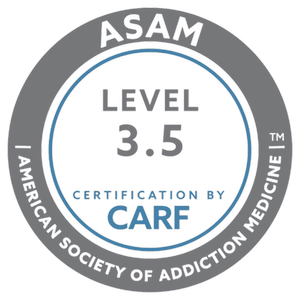How Genetics Play a Role in Alcoholism
As we spring into spring and walk into Alcoholism Awareness Month, we wanted to return to some age-old questions we often hear.
Is alcoholism hereditary?
If my parents are alcoholics, how likely am I to be an alcoholic?
Is there a gene for alcoholism?
We’ve covered this topic once before, but wanted to revisit some outstanding questions and maybe help settle some doubts.
The Difference Between Genetics and Heredity
While these two terms are often used interchangeably, they do have some slight differences that we need to be aware of first.
While you won’t catch a second glance from the majority of people while switching out these terms, they technically aren’t the same.
A hereditary trait is genetic in nature. But, there can be instances where a genetic trait isn’t hereditary. To dig in further, let’s think about a genetic disease such as cancer, Alzheimer’s, and alcohol use disorder.
A genetic disease occurs because of a mutation or anomaly in a genome. They will always be the result of a mutation and don’t necessarily have to be hereditary.
Hereditary diseases, on the other hand, are conditions also caused by genetic mutations that could be passed down from generation to generation. Think of diseases such as sickle cell anemia, muscular dystrophy, and Albinism.
It is also often assumed that just because a disease has been passed down, that it always links to genes but that’s not always the case.
There is a large overlap between the two terms, no doubt, but here are the cliff notes on the difference:
Hereditary diseases can be passed from one generation to another.
A genetic disease may or may not be hereditary but is always the result of a mutation or change in someone’s genome.
Let’s move on from the science lesson and start talking about how genes play a role in alcoholism.
Genetics and Alcoholism
When it comes to alcohol use disorder, scientists estimate that genetics make up about 50% of the reason.
How does that work though?
Individuals may have a predisposed condition where they metabolize alcohol so that pleasure and gratifying feelings outweigh the nauseous, woozy, overheating, etc., feelings that may come through alcohol abuse.
This question stumped many until a 2008 study by the National Institution on Alcohol Abuse and Alcoholism proved that genetic factors play a huge role in those that struggle with alcohol abuse. Since then, specific genes that play a direct role in the development in the reward center of the brain have been located.
How Genes Influence the Mind and Body
When it comes to the specific genes, narrowing them down is quite complex. However, multiple studies have shown that some of these genes have been identified, including two genes of alcohol metabolism, ADH1B and ALDH2, that have the strongest known effects on risk for alcoholism. Studies are revealing other genes in which variants impact risk for alcoholism or related traits, including GABRA2, CHRM2, KCNJ6, and AUTS2.
As larger samples are assembled and more variants analyzed, a much fuller picture of the many genes and pathways that impact risk will be discovered.
There are some ways to examine how these genes influence the mind and body in relation to alcohol consumption.
For example - cravings. While it’s completely normal to have cravings, your brain also plays a role in telling you when to stop indulging yourself. If you’ve been craving chocolate, you’re going to stop yourself once you’re full or feel like you’re all sugared out. Where do these signals come from? Well, it’s in our nature and our genes. People with certain genes have stronger cravings, while others with different gene variants don’t experience the same levels of cravings.
Therefore, those with the latter gene variants don’t process warning signs or body signals telling them to stop using.
Speaking of regulation, serotonin is perhaps the most important mood-regulator in our brains. Correlations show that those with a predisposition to alcohol abuse often have unusual levels of serotonin. This can vary, between being too little or too much, not allowing the brain to regulate the mood, resulting in a multiplicity effect. People with varying levels of serotonin are more likely to be depressed, have stress or anxiety, hence, turning to substances to achieve the same feelings of ‘happiness’ that people with normal levels of serotonin have.
The Other Fifty Percent
While genes play about 50% of the role when it comes to alcoholism, what is the other fifty percent?
A person’s environment.
The genetic predisposition, combined with an unhealthy environment, is likely to lead an individual to alcohol abuse or eventual addiction.
So while genetics play a huge role, one also needs to be cognizant of the role of one’s environment and day-to-day activity.
How We Can Help
As mentioned before, April is Alcoholism Awareness Month. This is a time to bring awareness to those struggling with abuse or addiction while answering some of the most pressing questions.
If you are struggling, or you know someone who is looking for help, please reach out and contact us today. We can help you on your journey to recovery.
Get The Latest Updates In Drug & Alcohol Recovery News To Your Inbox
If you opt into our newsletter, we promise to respect your privacy. We don’t share your information with any other parties.
Sign up to get info about the science behind addiction, the latest trends in addiction treatment, inspirational recovery stories, and much more.



